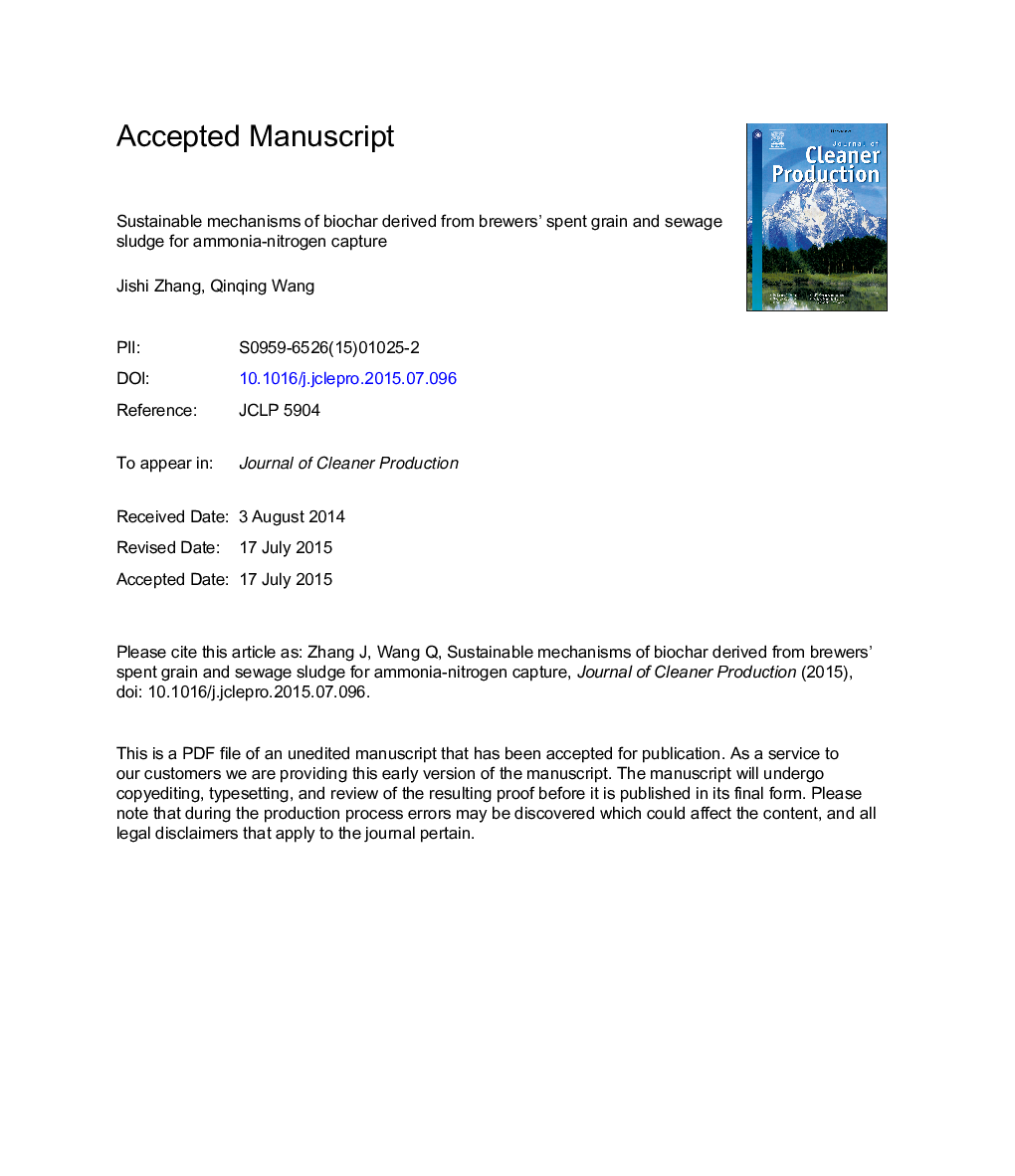| Article ID | Journal | Published Year | Pages | File Type |
|---|---|---|---|---|
| 10687937 | Journal of Cleaner Production | 2016 | 36 Pages |
Abstract
The limitations of the existing means of treating brewers' spent grain and sewage sludge highlight the need to find sustainable routes to manage them. Biochars derived from their mixtures enriching with magnesium and phosphorus, through pyrolysis at 400-700 °C, were characterized, and their potential use as a capture agent for ammonia-nitrogen removal in aqueous solutions was also analyzed. The yield increased with rising brewers' spent grain ratio, but decreased with increasing temperature. Higher pyrolysis temperature caused higher ash content, pH, surface basicity, specific surface area, and mineral element concentrations, whereas lower surface acidity, cation exchange capacity and nitrogen contents. Biochars derived from the mixtures of brewers' spent grain and sewage sludge (80:20, wt%) gained the highest removal efficiencies of ammonia-nitrogen, owing to their high surface area, magnesium and phosphorus availability, suitable surface chemistry and morphology. Compared with other biochars for ammonia-nitrogen adsorption, the biocahrs had high removal efficiencies (above 60%), which also had the potential to sustainably contribute to carbon dioxide emission reduction and nitrogen recovery.
Keywords
Related Topics
Physical Sciences and Engineering
Energy
Renewable Energy, Sustainability and the Environment
Authors
Jishi Zhang, Qinqing Wang,
